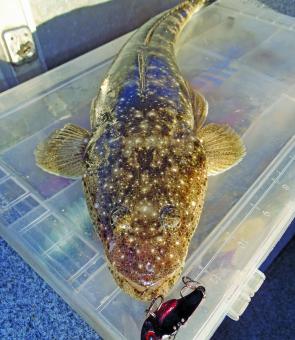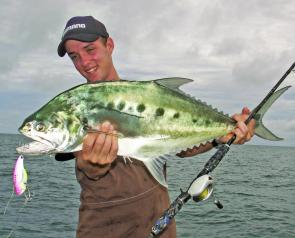It’s now midway through winter which means the air and sea temperatures should be quite cool throughout this month. However, there are still plenty of options for some top-shelf fishing.
Winter is an interesting time of year for fishing in the Whitsundays. The weather is often a bit chilly but when calm days come around with clear, sunny skies it can be a magnificent time to be out on the water.
If you’re into chasing pelagics such as queenfish, GT, golden trevally and a host of mackerel species, there should be some great options around July. As with all fishing, you need to find the fish in order to catch them and these pelagics are no different.
Pelagics are always on the move, however many of these species will stay in particular areas for long periods. Underwater structure and cover is what keeps these fish in certain areas. This makes the job of finding them a little easier. Whether it be rocks, reefs, shoals or drop-offs these places attract fish.
It’s a great idea to use a depth sounder/GPS unit to search for pelagics in these types of locations. Try to find large concentrations of baitfish or large arches on the sounder screen indicating big predatory fish in the vicinity. We like to use the downscan feature on our Lowrance HDS 8 sounder. It has great detail when showing baitfish and predators.
Once you’re confident you’ve found some fish, there are countless ways to fish for them. Floating live baits, bottom fishing with dead baits, vertical jigging with jigs and blades, fishing heavy jig-head soft plastics near the bottom, the list goes on. One option that can work well on a host of pelagics and reef species is to put berley around a spot and then fish it with baits and lures.
You could catch anything using this technique from a chunky golden trevally to a colossal Spanish mackerel. You’ll need an oily-based fish to use as berley. Pilchards are one of the best berley to use as their scent disperses and travels a long way in the current.
It’s best to anchor your boat and stay in one position and let the berley attract fish. Throw out a few chunks of pilchards every so often, about every five to ten minutes. Then, you can try a range of techniques but try to fish in or near the berley trail. It can be a good idea to have a range of techniques going at once.
For example, one rod has a pilchard on a float out the back, another rod has a bait on the bottom and you’ve got another rod, using a metal slice and cranking it up through the trail.
You can use this technique is so many places around the Whitsunday Islands but proven places include Nara Inlet, Double Rocks, the rocky headlands around Mackerel Bay, Hook Passage, the edges around Hayman Island and Double Cones to name a few.
If you don’t have a boat to use or if you’d just prefer to do some land-based fishing, you still have some solid options. The rock walls near the VMR station just opposite the Cannonvale boat ramp has proven to be a productive spot at times. Anglers often catch a range of species such as grunter, bream, a variety of trevally, fingermark and other tropical estuary and inshore pelagic fish. It can also be a productive spot for barramundi. Many of these fish 1m long have been landed here in the past on baits and lures.
Catching a 1m barramundi from the rocks is a very exciting experience and just the thought of battling one from the shore is enough to make you stay out there in the cold wind!
If you want to put yourself in with the greatest chance of catching some quality fish here, it’s best to fish during low light times and use very fresh dead or live baits. It’s also a good idea to chuck out a few bits of berley every now and then to attract fish into the area.
The best tide flow for this spot is usually when it’s half way coming out or in. This means there’s a bit of current flow moving food around for predatory fish. On dead low tide the area becomes a bit too shallow and doesn’t have enough depth to attract big fish.
Another land-based spot is the Shute Harbour fishing jetty near the Shute boat ramp. This pontoon is situated right beside the harbour, which is a good fish attracting feature. This area seems to produce more pelagic fish such as queenfish, GT, golden trevally and spotted mackerel. Again, the freshest baits or live baits such as herring or mullet are the best options.
Reads: 5925
A solid flathead caught on a TT Switchblade hopped along a shallow sand flat.

The TT Switchblade HD has become a popular lure for targeting large pelagics in the deep.

GT of this size are commonly found around the many Whitsunday Islands.

Mid-sized queenfish can be a fun target when they’re feeding in large schools.




